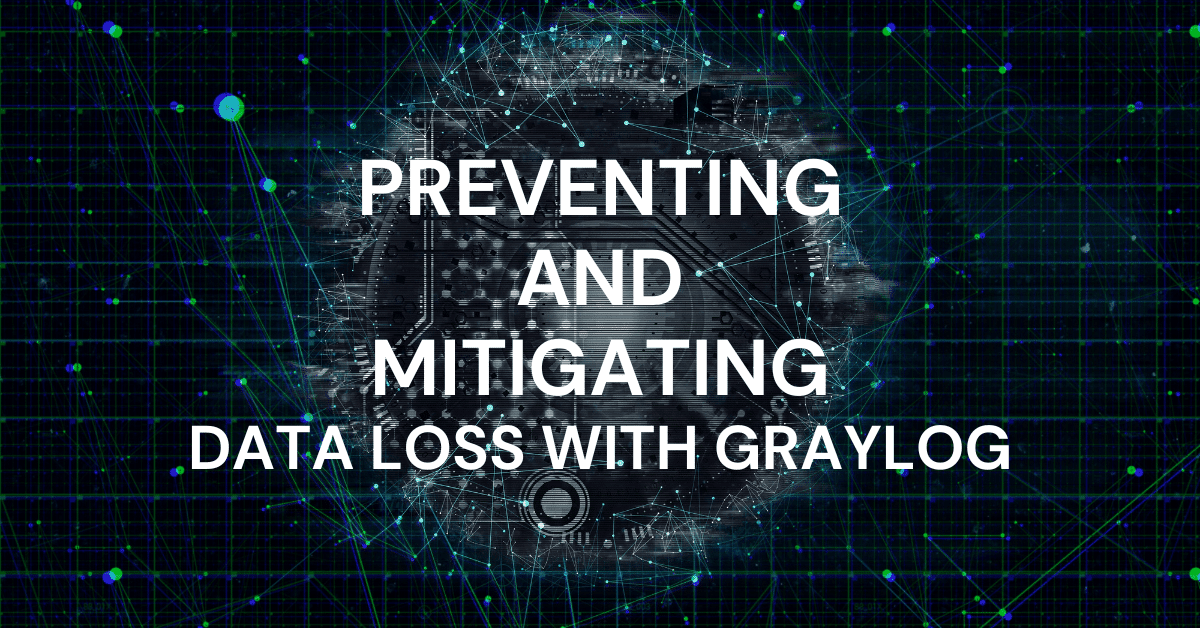If you’re handling sensitive information, dealing with data loss can be more than just a headache. Log management tools such as Graylog can enhance your incident response and management strategies, and help you mitigate the damage when a breach occurs in your database. Minimizing data loss with a fast and scalable logging solution is key if you want to bring your cybersecurity to the next level.
WHY IS IT IMPORTANT TO MITIGATE DATA LOSSES?
Wherever there’s something that holds some value, a criminal out there is ready to steal it. Chances are that if your enterprise is holding precious data hidden and secured, there’s a cybercriminal somewhere who is actively trying to steal it. New malware technologies are spurted out of the devious minds of malicious actors every day, to commit articulated mischief and poke inside your most valuable assets.
Depending on how delicate those assets are, the consequences of a disruption in your data flow may range from a mildly annoying password reset to a true catastrophe such as the infamous Equifax data breach. Resiliency is required to mitigate incoming damage, but when things go south no matter what, a strong remediation strategy can be the only chance to restore vital services that got unexpectedly impaired. Whether your cybersecurity approach values SIEM or SOAR as a means to prevent issues and mitigate damage once a sector is compromised, appropriate log monitoring may represent the silver lining that you need to establish a top-tier cybersecurity stance.
HOW CAN YOU MINIMIZE DATA LOSS WITH A LOG MANAGEMENT TOOL?
If you ask any cybersecurity strategist what’s the first place where you should look for to identify an indicator of compromise, with due probability the answer will always be the same – your system logs. It doesn’t matter whether you want to run a brick & mortar forensic analysis on the root causes of the disruption or establish a rock-solid prevention strategy that focuses on alerting you whenever something odd occurs. Logs are, hands down, your most vital asset and the basic currency you will “spend” to protect your critical data.
However, ingesting terabytes of log data is completely useless if you don’t have any efficient tool to parse through them, archive the things that matter, and keep a vigilant eye on any anomaly. Knowing when and where to act means that you can also plan your remediation strategies accordingly. You can’t monitor any and all IoT devices connected to the network, but you can definitely tidy up your asset inventory and focus on what really matters.
For example, you can set your risk baselines to monitor only your most vulnerable areas, and collect info that is used to heighten gateway restrictions whenever one of them is compromised. Or rapidly identify whether a malicious actor is still moving across your network by looking around for unusual login attempts.
HOW GRAYLOG CAN HELP YOU SECURE YOUR DATA
Log files can capture throngs of information, but setting up your rules is what makes the difference between finding pertinent data and drowning in an ocean of useless information. Incident response and management require agility and lightning-fast reaction times. You don’t want to struggle with an unresponsive or clunky tool during a data breach emergency. Graylog avoids all that – you can keep all data under your eyes with dashboards, but more importantly, you can choose to monitor only the data that you need to oversee.
Larger enterprises may want to automate their security (or at least, a part of it) to save their SecOps teams from exhaustion or allow them to focus on more important tasks. An automated SOAR or SIEM solution can tell you which access point has been compromised in real-time, but you need to be informed only when something relevant comes up – else you’ll find yourself buried under a mountain of annoying alerts.
Graylog is key here to set up a high threshold for alerts. You can set multilayer rules to cross-reference different indicators of compromise so that you get a notification (or automated blocking) only when two or more significant events are linked together. Even better, you can correlate your notification with global security intelligence by integrating threat intelligence feeds. Not only you will skip a lot of false positives, but you can also be certain that your security is one step beyond bulletproof.
A robust control system can’t be set up if you can’t collect data from different inputs in a reliable way. Graylog Sidecar is a stackable solution for centralizing log gathering processes from all your systems. You can collect logs consistently with any agent. And since security is the topic of this discussion, all data in transit can be encrypted as well.
CONCLUSION
Logfile centralization and management are the icing on the cake of any reliable security strategy. Graylog will save your team’s precious time by filtering out any non-relevant info, helping you pinpoint the source of your issues, and putting the nitro in your system when you need to react to an ongoing threat.


